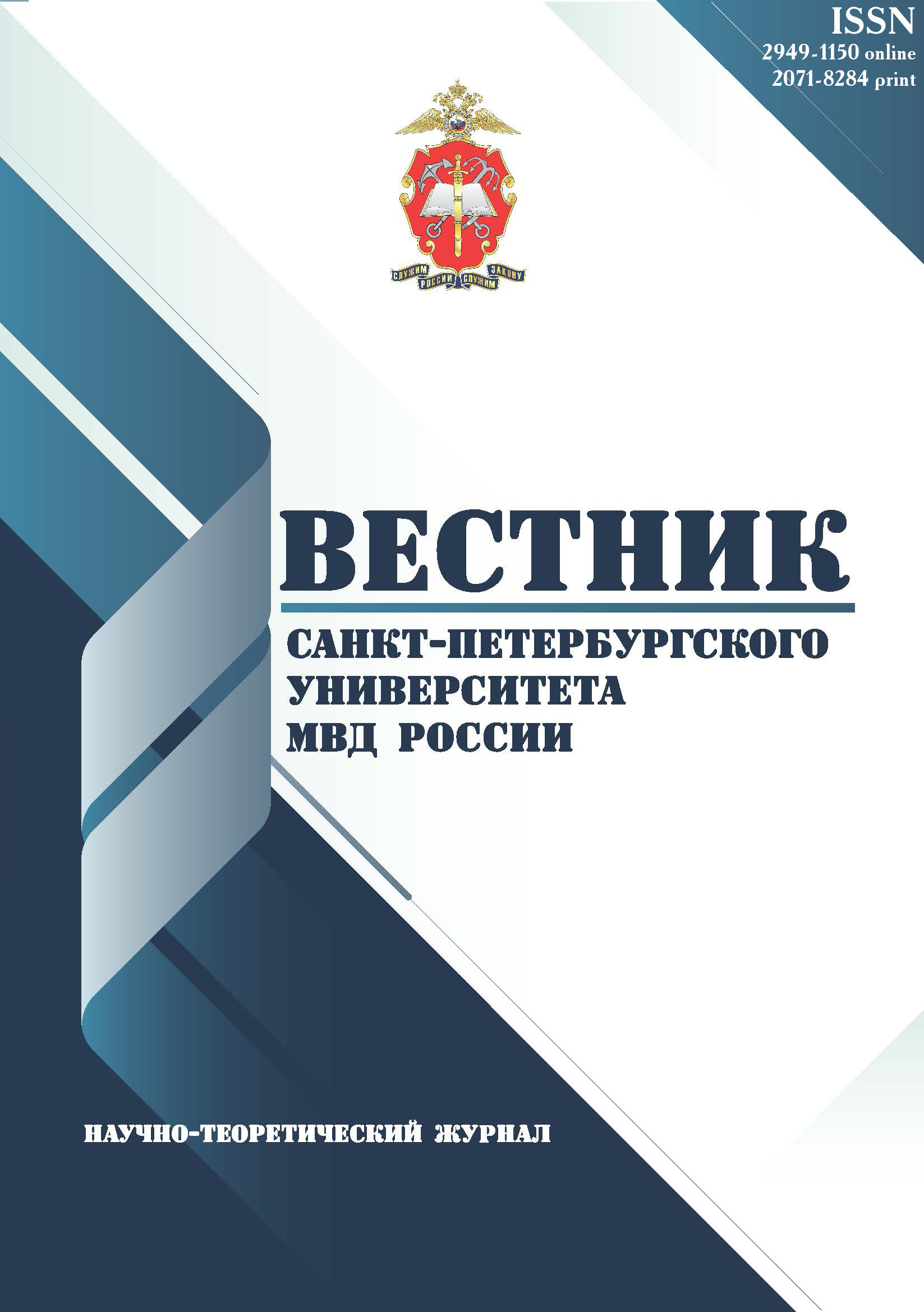employee from 01.01.2020 until now
St Petersburg, St. Petersburg, Russian Federation
from 01.01.2019 until now
Kursk, Kursk, Russian Federation
UDC 343.148
CSCSTI 10.77
CSCSTI 10.81
CSCSTI 10.85
Russian Classification of Professions by Education 40.05.01
Russian Classification of Professions by Education 40.05.02
Russian Classification of Professions by Education 40.05.03
Russian Classification of Professions by Education 40.03.01
Russian Classification of Professions by Education 40.04.01
Russian Library and Bibliographic Classification 67
Russian Trade and Bibliographic Classification 758
BISAC LAW026000 Criminal Law / General
BISAC LAW052000 Jurisprudence
Over the past decade, there has been registered a significant increase in crimes committed using high technologies, which requires framing a new theoretical approach to the mechanism of the formation of digital footprints. For the abovementioned reasons, digital data acquires special relevance in the detection, solving, and investigation of economic crimes, since technical skills may give the user an opportunity to destroy, damage, or modify their digital traces. In the period from 2010 to 2020, the number of crimes committed using high technologies increased by more than 35 times, while the number of economic crimes committed decreased (by 162%). In the course of a detailed analysis of statistical data and the contributing factors, it became possible to establish a relationship between quantitative changes in economic crimes and crimes committed with the use of high technologies. The article analyzes the domestic criminalistic approach to the mechanism of trace formation, considering the classification of digital footprints depending on the mechanism of trace formation. The author offers a schematic design of the digital footprint formation mechanism, showing its distinction from the mechanism of trace formation in a traditional sense, and its practical importance.
cybercrime, digital space, crime prevention, trace formation, digital footprints, the mechanism of trace formation
1. Abdullaeva K. N., Kurbanova A. M. Vidy komp'yuternyh setey i ih naznachenie / Dagestan-IT-2016: sbornik materialov II Vserossiyskoy nauchno-prakticheskoy konferencii. - Mahachkala: Dagestanskiy gosudarstvennyy pedagogicheskiy universitet, 2016. - S. 132-136.
2. Borzenkov P. E. K voprosu o vnedrenii kategorii «virtual'nye sledy prestupleniya» v sistemu kriminalistiki / Sovremennaya nauka: aktual'nye voprosy, dostizheniya, innovacii: sbornik statey IV Mezhdunarodnoy nauchno-prakticheskoy konferencii. V 2-h chastyah. - Ch. 1. - Penza: MCNS «Nauka i Prosveschenie», 2018. - S. 151-154.
3. Ischenko E. P. Kriminalistika: glavnye napravleniya razvitiya / Ugolovno-processual'nye i kriminalisticheskie chteniya: materialy Mezhdunar. nauch.-prakt. internet-konf. - Irkutsk: Izd-vo BGUEP, 2012. - S. 201- 209.
4. Kardashevskaya M. V. Ispol'zovanie informacionnyh tehnologiy pri raskrytii seriynyh prestupleniy // Rassledovanie prestupleniy: problemy i puti ih resheniya. - 2021. - № 1. - S. 138-141.
5. Kolycheva A. N. Mehanizm sledoobrazovaniya v setevom prostranstve // Sovremennoe ugolovno-processual'noe pravo - uroki istorii i problemy dal'neyshego reformirovaniya. - 2019. - T. 1. - № 1 (1). - S. 268-274.
6. Kryazhev V. S. Poiskovo-poznavatel'naya deyatel'nost' pri raskrytii i rassledovanii prestupleniy: iz proshlogo v nastoyaschee // Sibirskie ugolovno-processual'nye i kriminalisticheskie chteniya. - 2020. - № 2 (28). - S. 55-64.
7. Levchenkova V. A. Sovremennye nauchnye podhody k formirovaniyu ucheniya o virtual'nyh sledah / Ugolovno-processual'nyy kodeks Rossiyskoy Federacii: dostizheniya i problemy primeneniya : sbornik materialov III Mezhdunarodnoy studencheskoy nauchno-prakticheskoy konferencii. - Kursk: Universitetskaya kniga, 2016. -S. 105-108.
8. Mescheryakov V. A. Virtual'nye sledy pod «skal'pelem Okkama» // Informacionnaya bezopasnost' regionov. - 2009. - № 1 (4). - S. 28-33.
9. Cherkasov V. N., Nehoroshev A. B. Virtual'nye sledy v «kiberneticheskom prostranstve» / Sudebnaya ekspertiza : mezhvuz. sb. nauch. st. - Vyp. 2. - Saratov: SYuI MVD Rossii. 2003. - S. 28-33.
10. Yablokov N. P. O nekotoryh osobennostyah kriminalisticheskoy taktiki rassledovaniya prestupleniy v usloviyah cifrovogo mira / Eliseyskie politiko-pravovye chteniya: sbornik nauchnyh statey po materialam 12-y Vserossiyskoy nauchno-prakticheskoy konferencii. - Moskva: MGU im. Lomonosova, 2019. - S. 372-379.














